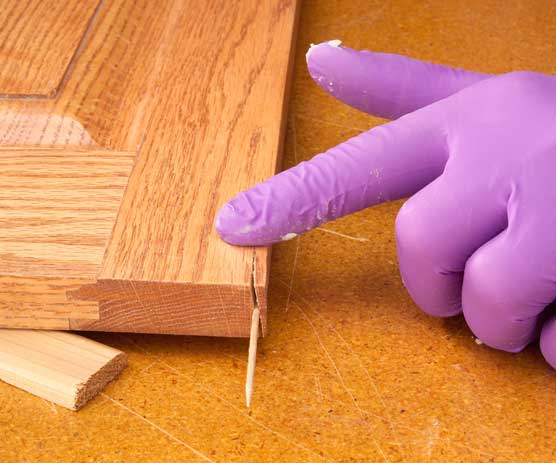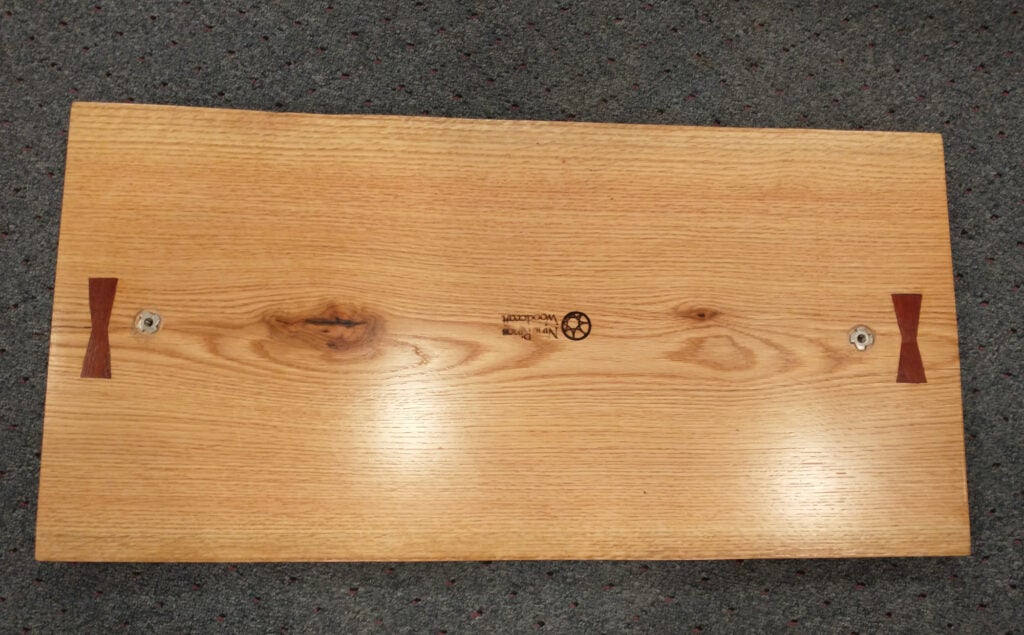Wood furniture and decor can add warmth and character to any space, but over time, even the most well-crafted pieces can develop cracks. These cracks not only detract from the aesthetic appeal of the wood, but they can also compromise its structural integrity. The good news is that repairing cracked wood is not as daunting as it may seem. With a few simple techniques and a little patience, you can restore your wooden treasures to their former glory. In this guide, we will explore the step-by-step process of fixing cracked wood, providing you with the knowledge and confidence to tackle this common issue like a seasoned professional.
Before we delve into the specifics of repairing cracked wood, it’s important to understand the underlying causes of these cracks. Changes in temperature and humidity levels, along with natural aging and wear and tear, can all contribute to the formation of cracks in wood. Whether it’s a hairline fracture or a more substantial split, addressing these cracks promptly is crucial to prevent further damage and ensure the longevity of your beloved wooden items. So, if you’re ready to roll up your sleeves and embark on a journey of wood restoration, let’s dive into the world of crack repair and learn how to bring your wooden treasures back to life.
How to Fix a Cracked Wood:
- Assess the crack: Determine the size and severity of the crack in the wood.
- Prepare the crack: Clean the crack thoroughly and remove any loose debris.
- Fill the crack: Apply a wood filler or epoxy resin into the crack, following the manufacturer’s instructions.
- Sand and smooth: Once the filler has dried, sand the area smooth to blend it with the surrounding wood.
- Finish the repair: Apply a matching stain or paint to the repaired area for a seamless finish.

How to Fix Cracked Wood: Step-by-Step Guide
In this guide, we will walk you through the step-by-step process of fixing cracked wood. Whether it’s a furniture piece, a wooden floor, or any other wooden surface, cracks can be unsightly and compromise the structural integrity of the wood. By following these instructions, you can restore the beauty and strength of the wood, ensuring its longevity. Let’s get started!
Assess the Severity of the Crack
The first step in fixing cracked wood is to assess the severity of the crack. This will help determine the appropriate repair method. Small cracks, known as hairline cracks, can often be fixed easily with simple DIY techniques. However, larger or more severe cracks may require professional assistance or even replacement of the damaged wood.
Start by inspecting the crack carefully. Clean the area around the crack using a soft brush or cloth to remove any dirt or debris. Ensure that the crack is dry and free from any moisture. Use a magnifying glass if necessary to get a closer look at the crack and identify its depth and length. Take measurements and note down any important details that will help you determine the best course of action.
Fill the Crack with Wood Filler
Once you have assessed the crack and determined that it can be fixed, the next step is to fill the crack with wood filler. Wood fillers are specifically designed to repair cracks in wood and restore its strength and appearance. Choose a wood filler that matches the color and type of wood you are working with for a seamless finish.
Before applying the wood filler, prepare the crack by sanding its edges using fine-grit sandpaper. This will create a smooth surface for the filler to adhere to. Follow the manufacturer’s instructions to mix the wood filler properly. Apply the filler to the crack using a putty knife, ensuring it fills the entire crack evenly. Remove any excess filler using the putty knife or a damp cloth. Allow the filler to dry completely as per the manufacturer’s recommended drying time.
Sand and Finish the Repaired Area
Once the wood filler has dried, it’s time to sand and finish the repaired area. Start by sanding the filled crack using fine-grit sandpaper. This will help level the filler with the surrounding wood and create a smooth surface. Sand in the direction of the wood grain to avoid any visible scratches or marks.
After sanding, clean the area to remove any dust or debris. Apply a suitable wood finish or stain to match the rest of the wood surface. Use a brush or cloth to apply the finish evenly, following the manufacturer’s instructions. Allow the finish to dry completely before using or exposing the wood to any moisture or heavy use.
Regular Maintenance and Prevention
Fixing cracked wood is not just about repairing the existing damage but also about preventing future cracks. Regular maintenance and preventive measures can help maintain the integrity of the wood and minimize the chances of cracks developing.
Keep the wood clean and free from moisture, as excessive moisture can lead to wood expansion and contraction, causing cracks. Use appropriate wood cleaners or polishes to nourish and protect the wood. Avoid placing heavy objects directly on the wood surface, and use coasters or protective pads to prevent scratches or dents. By taking these simple steps, you can extend the lifespan of your wood and reduce the need for frequent repairs.
Seeking Professional Help
If you are unsure about your ability to fix cracked wood or if the damage is extensive, it’s best to seek professional help. A professional woodworker or carpenter will have the expertise and tools to handle complex repairs and ensure a durable, long-lasting fix. Don’t hesitate to reach out to them for a consultation or assistance if needed.
Remember, fixing cracked wood requires patience, precision, and the right tools and materials. By following these step-by-step instructions and taking necessary precautions, you can successfully repair cracked wood and restore its beauty and functionality.
Frequently Asked Questions
Here are some commonly asked questions about how to fix cracked wood:
Question 1: How can I determine the cause of the crack in my wood?
When trying to fix a crack in wood, it is important to first identify the cause of the crack. Cracks can occur due to various reasons, such as changes in humidity, age, or improper installation. To determine the cause, carefully examine the crack and surrounding area, checking for any signs of moisture, structural issues, or previous repairs. If you are unsure about the cause or extent of the damage, it is advisable to consult a professional.
Once you have identified the cause, you can take appropriate measures to fix the crack and prevent future damage.
Question 2: What should I do if the crack in the wood is small?
If the crack in the wood is small, you can often fix it using a wood filler. Start by cleaning the crack and removing any loose debris or splinters. Then, apply the wood filler according to the manufacturer’s instructions, using a putty knife to spread it evenly over the crack. Allow the filler to dry completely, and then sand it down to achieve a smooth finish. If necessary, you can also stain or paint the repaired area to match the surrounding wood.
Keep in mind that wood fillers are best suited for small cracks or surface imperfections. For larger or structural cracks, it is recommended to seek professional assistance.
Question 3: Can I use wood glue to fix a cracked piece of wood?
Wood glue can be a suitable option for fixing cracked wood depending on the severity of the crack. If the crack is small and not too deep, applying wood glue can help to bond the wood fibers back together. Start by cleaning the crack and applying a thin layer of wood glue along the length of the crack. Gently press the wood together, ensuring the glue spreads evenly. Use clamps or heavy objects to hold the wood in place until the glue dries completely.
However, it is important to note that wood glue may not be effective for large or structural cracks, as it may not provide enough strength or stability. In such cases, it is advisable to consult a professional for proper repair.
Question 4: How can I prevent cracks from forming in wood?
To prevent cracks from forming in wood, it is essential to take preventive measures. Here are a few tips:
1. Maintain a stable humidity level in your environment to minimize wood expansion and contraction.
2. Avoid exposing wood to extreme temperature changes or direct sunlight.
3. Use appropriate protective finishes, such as varnish or sealant, to reduce moisture absorption.
4. Handle and install wood carefully, avoiding excessive force or pressure.
5. Regularly inspect and maintain wood furniture or structures to address any signs of wear or damage promptly.
Question 5: When should I consider replacing the wood instead of fixing a crack?
While many cracks in wood can be repaired, there are instances where it is more practical to replace the wood. Consider replacing the wood in the following situations:
1. The crack is extensive, deep, or affects the structural integrity of the wood.
2. The wood is severely warped, rotten, or damaged beyond repair.
3. The cost of repairing the crack and restoring the wood outweighs the cost of replacement.
4. The wood is part of a larger project, and replacement is necessary for consistency or aesthetics.
5. The crack keeps recurring despite repeated repair attempts.
In such cases, it is advisable to consult a professional to assess the damage and provide guidance on the best course of action.

Woodworking Tip: Finishing – How to Repair Wood Cracks
In conclusion, repairing cracked wood can be a daunting task, but with the right techniques and tools, it is not an impossible feat. By carefully assessing the severity of the crack and determining the appropriate repair method, you can restore the strength and beauty of your wooden furniture or structures. Remember to clean and prepare the crack properly before applying any adhesive or filler, and always allow sufficient drying time for the repairs to fully set.
Moreover, prevention is key when it comes to maintaining the integrity of wood. Regularly inspecting your wooden items and addressing any small cracks or damages promptly can help prevent larger issues from arising in the future. Additionally, taking preventive measures such as keeping humidity levels stable and avoiding direct exposure to sunlight can go a long way in preserving the condition of wood and minimizing the risk of cracks.
By following these steps and incorporating proper maintenance practices, you can effectively fix crack wood and ensure the longevity of your wooden items. Remember, patience and attention to detail are crucial in achieving successful repairs. With a little effort and the right approach, you can restore the beauty of cracked wood and enjoy its durability for years to come.
- How to Get Oak Wood in Minecraft - April 21, 2024
- How to Process Wood - April 21, 2024
- How to Install Wood Siding - April 21, 2024